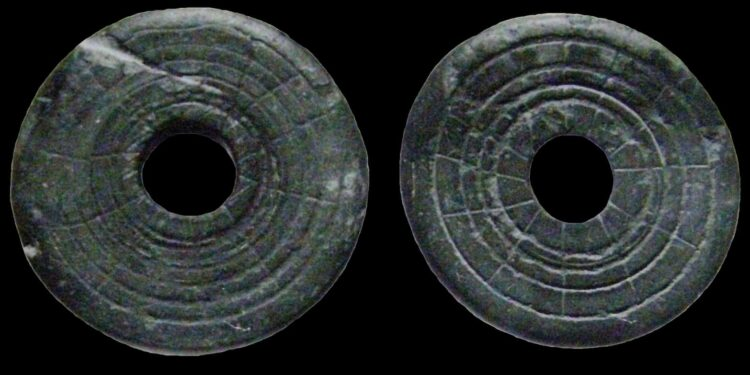A Fascinating Archaeological Discovery
A recent archaeological find in southern Ukraine has sparked excitement among historians and researchers. Several enigmatic pyrophyllite discs, once thought to be simple tools or ritual objects, may actually hold the key to an ancient Viking navigation technique—one that predates the magnetic compass. If this theory is correct, it could redefine our understanding of medieval seafaring technology.
The Origins and Unique Features of the Discs
These medieval artifacts, dating back to the 12th and 13th centuries, are made from pyrophyllite, a soft and easily carved stone from the Ovruch region of Ukraine. Pyrophyllite was commonly used during the Middle Ages for crafting religious icons and sharpening stones. However, what makes these discs particularly intriguing are their distinct engravings—concentric circles and radial lines—which suggest a more advanced function.
Archaeologists unearthed these artifacts in significant medieval settlements such as Kyiv, Listven, and Liubech. These areas were central to the bustling trade networks between the Rus people and Scandinavian merchants along the renowned “Varangian to the Greeks” trade route, which connected northern Europe to the Byzantine Empire.
Could These Discs Have Been Viking Solar Compasses?
Initially thought to be everyday tools or ceremonial objects, experts now propose a groundbreaking theory: the discs may have functioned as solar compasses. This idea is supported by their resemblance to other Viking navigation tools discovered in Greenland and the Baltic region.
Viking solar compasses were essential for long voyages, allowing seafarers to determine their direction by tracking the sun's position. These devices typically featured a circular design with a central stick, or gnomon, that cast shadows to indicate orientation. While no gnomons were found with the Ukrainian discs, their intricate carvings suggest they could have been used similarly—perhaps with temporary markings made from charcoal or chalk.
Links to Other Viking Navigation Tools
Comparable artifacts have been found in Viking settlements throughout Europe. Wooden solar compasses recovered in Greenland and bone navigation tools discovered in Scandinavia share remarkable similarities with the Ukrainian discs in both design and dimensions. However, slight variations—such as differing sizes of central holes—suggest regional adaptations of the same technology.
The discovery of these discs in major trade centers implies that local populations may have adopted and modified Scandinavian navigational techniques. This cross-cultural exchange likely influenced the development of medieval navigation and craftsmanship in the region.
The Ongoing Mystery
Despite the compelling evidence, the exact purpose of these artifacts remains uncertain. To validate the solar compass hypothesis, further experimental archaeology and advanced scientific analysis are necessary. Researchers are calling for in-depth studies to determine how these objects were utilized in the past.
If proven to be navigational tools, these Ukrainian artifacts would provide a rare glimpse into the ingenuity of medieval seafarers and highlight an often-overlooked aspect of Viking innovation.
Join the Discussion!
What do you think about this discovery? Connect with us on social media to share your thoughts and explore more fascinating historical findings!







